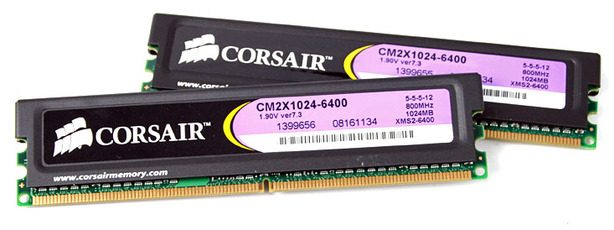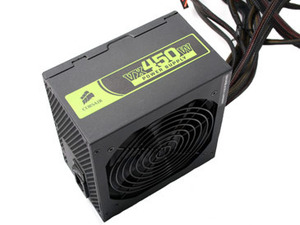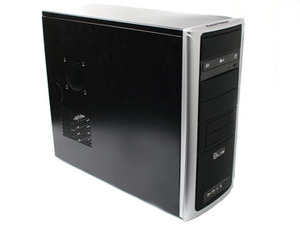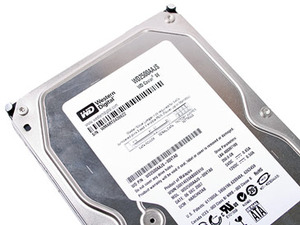
Memory – Corsair Twin2X2048-6400C5
Price: £30.13 (inc. VAT)One of the biggest reasons why it’s possible to build a system with the specification we’ve assembled here on such a tight budget is DRAM prices – DDR2 prices have been in free fall for the past twelve months and many enthusiasts have been stuffing their systems full of memory left, right and centre.
This also means that building a system with our minimum-recommended 2GB of memory doesn’t make much of a dent in your budget – at under £35 for 2GB of good-quality branded memory backed with a lifetime warranty, you’d be a fool to go for the cheap option... even when the budget is tight.
Corsair has long been at the top of the enthusiast memory scene and has a reputation for breaking memory speed world records. We’re not going to break any memory speed records with the DDR2-800 CAS4 we’ve kitted this system out with, but it shouldn’t get in the way of our attempts to overclock the Pentium Dual-Core E2160 CPU we’ve equipped our machine with.


Power Supply – Corsair VX450W
Price: £44.05 (inc. VAT)We’ve looked at a lot of Corsair power supplies in recent times and it has made quite an impact on the market in what has to be said is not very long. Indeed, when we looked at the company’s VX550W PSU, we found that it was a really awesome bit of kit that came with a very affordable price too.
In light of that, the VX450W was a natural choice for us in building the ultimate cheap gaming PC – it should have similar performance characteristics to the VX550W. It follows essentially the same design and has the same CWT manufacturing quality, along with the inexpensive price that perfectly fits in with our budget.
Of course, there are cheaper units out there, but given that a reliable PC requires a reliable power source, we’d rather go for a brand that has a reputation for delivering just that. At the same time, while 450W may not seem like much, it’s more than ample for the machine we’re building here—and for future upgrade opportunities as well should you want to beef up the CPU, GPU or even hard drive capacities.
On the connectivity front, there’s plenty of room for expansion as well, as the VX450W has two six-pin PCI-Express connectors, along with several SATA and Molex plugs for more drives. All in all, I don’t think we could have bought a better power supply for the money.
Case – Cooler Master RC-331 Elite
Price: £24.66 (inc. VAT) Cooler Master has a reputation for building good cases at reasonable prices and, although the price of this case is low, its build quality is actually pretty good. Of course, a £25 case isn’t going to be particularly special and had the budget been higher, we would have liked to include a more expensive chassis.
Cooler Master has a reputation for building good cases at reasonable prices and, although the price of this case is low, its build quality is actually pretty good. Of course, a £25 case isn’t going to be particularly special and had the budget been higher, we would have liked to include a more expensive chassis. With that said though, it does a job and it does it well – at the back there is just the one 120mm fan, with room for another one to be installed at the front of the case should you feel the need for more cooling.
The RC-331’s cooling abilities are pretty good without that second fan though—especially with the hardware we’ve installed in it—as the case works on negative pressure, where air is forced into the case because of the lower pressure. However, we’d definitely recommend installing that second fan if you’re planning to install more than a couple of hard drives as it’d help to prevent them from overheating with a minimal noise increase.
In addition to the fan mountings, there’s a grill on the side panel directly above the CPU cooler – on the back side of the panel, there’s also a funnel to help ensure optimal cooling for the CPU. Finally, there are four 5.25in drive bays and space for seven 3.5in drives – all come with ‘quick release’ mechanisms for easy drive installation, although as you’ll see, you can use screws too if you feel that’s necessary.
Hard Drive – Western Digital Caviar SE 250GB (WD2500AAJS)
Price: £34.53 (inc. VAT) Like memory, hard drive capacities have soared and prices have plummeted – 250GB is not only large enough to offer space for your operating system, plenty of programs and games, but also some storage as well. It won’t satisfy the most extreme hoarders out there, but the system we’ve built will allow you to increase storage capacity as and when you need it in the future.
Like memory, hard drive capacities have soared and prices have plummeted – 250GB is not only large enough to offer space for your operating system, plenty of programs and games, but also some storage as well. It won’t satisfy the most extreme hoarders out there, but the system we’ve built will allow you to increase storage capacity as and when you need it in the future.Optical Drive – Optiarc/NEC AD 7200S-0B
Price: £15.94 (inc. VAT)Choosing an optical drive isn't that important these days because they're so cheap – we had opted for an LG LN21894 drive, but sadly this has reached end of life since we started working on this feature. Scan recommended that we changed the drive to an Optiarc AD 7200S-0B, which comes with respectable write speeds for the various formats you're likely to use.
The simplicity of its black fascia will also fit in well with the overall style of the Cooler Master RC-331 Elite chassis, which is a good thing in our eyes. We're told that Optiarc is a joint venture between Sony and NEC, so the drive's quality should also be fairly good with two big and well-known brands behind it.
Operating System – Windows Vista Home Premium x64 OEM
Price: £62.62 (inc. VAT)It's fair to say that Windows Vista has had a pretty rough reception since its release in January 2007, but things have improved a lot with the release of Service Pack 1 in March of this year. A lot of the early problems with Vista were related to poor drivers, too, and Nvidia was responsible for the lion's share of driver-related crashes – we're pleased to say that things are much better on that front as well and performance (in games at least) is now very similar to what you'd see in Windows XP.
There is a confusing array of options presented once you've decided that Windows Vista is the way forwards, but since the price of the retail editions of Windows Vista are well out of our budget for this particular machine, we were left to choose an OEM version of the software. This is not a problem since we're buying components to go along with it, but the question is: which version do you choose?
Windows Vista Home Premium, of course, and we've opted for the 64-bit flavour as it'll give you more upgrade options in the future, should you feel the need to upgrade from 2GB of memory to 4GB or even 8GB. Windows Vista Home Premium not only includes support for DirectX 10, but it also includes Windows Media Center as well.

MSI MPG Velox 100R Chassis Review
October 14 2021 | 15:04








Want to comment? Please log in.